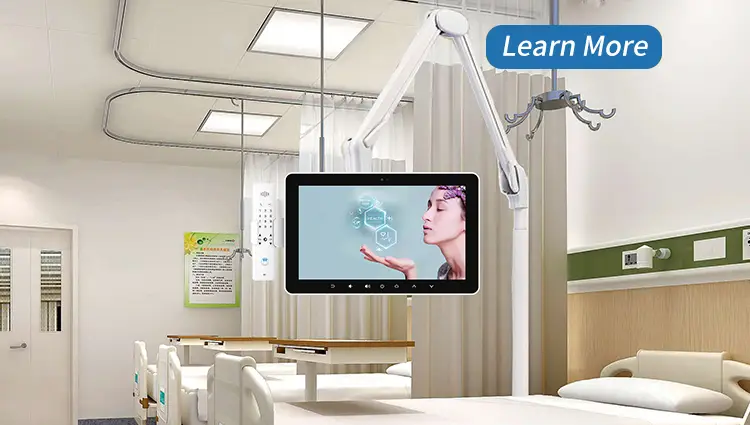Patient monitoring systems (PMS) have become the backbone of modern healthcare. With the global market projected to reach $61.6 billion by 2027 (Statista, 2023), these systems are revolutionizing care delivery in high-resource settings like the U.S. and adapting to unique challenges in the Middle East. Whether it’s FDA-approved devices for cardiac monitoring in Europe or portable systems for rural clinics in Saudi Arabia, this guide dives into innovations, compliance, and real-world applications to meet divergent needs.
Current Trends in Patient Monitoring
- 1.Remote Patient Monitoring (RPM):
RPM devices, like wearable ECG monitors, enable real-time tracking of chronic conditions (e.g., diabetes, hypertension). A 2022 WHO report highlights a 41% reduction in hospital readmissions in Germany using RPM solutions. - 2.AI-Driven Predictive Analytics:
Systems like Philips IntelliVue Guardian leverage machine learning to detect sepsis 6–12 hours earlier. Middle Eastern hospitals, such as Cleveland Clinic Abu Dhabi, report 30% faster response times through AI integration. - 3.Interoperability & EHR Integration:
Seamless connectivity with platforms like Epic or Cerner ensures real-time data sharing, reducing manual errors. For example, Dubai’s Smart Hospital Initiative mandates ISO 27001-certified systems for data security.
Key Components of Modern PMS
- Hardware: Biosensors, wearable patches, and bedside monitors like GE Healthcare CARESCAPE.
- Software: Cloud-based dashboards supporting multi-parameter monitoring (SpO2, BP, ECG).
- Alert Systems: Customizable thresholds to notify staff via SMS or EHR pop-ups.
- Compliance: GDPR (EU), HIPAA (U.S.), and MOHAP guidelines (UAE) for data privacy.
Benefits of Advanced Monitoring Systems
- Enhanced Patient Outcomes: A 2023 JAMA study linked continuous monitoring to a 22% drop in ICU mortality rates.
- Cost Savings: RPM reduces ER visits by 35%, saving U.S. hospitals $10.3B annually (Kaiser Permanente).
- Scalability: Wireless systems like Medtronic VitalSync support up to 1,000 beds, ideal for large Gulf Cooperation Council (GCC) hospitals.
Future Trends to Watch
- 1.5G-Enabled IoT: Ultra-fast data transmission for emergency response teams.
- 2.Personalized Care Algorithms: Systems adapting to patient-specific vital sign baselines.
- 3.Expansion in Home Care: Post-pandemic demand for FDA-cleared home monitoring kits (e.g., Masimo SafetyNet).
How to Choose the Right Patient Monitoring System
- 1.Assess Clinical Needs:
- Critical care? Opt for multi-parameter monitors with invasive BP tracking.
- Home use? Prioritize user-friendly RPM devices with LTE/Wi-Fi.
- 2.Budget & ROI:
Hospital-grade systems range from $2,000–$15,000 per bed. Middle Eastern buyers often seek ISO 13485-certified suppliers for long-term maintenance. - 3.Compliance:
Ensure CE marking for Europe or SFDA approval for Saudi Arabia. - 4.Vendor Support:
Look for 24/7 telehealth support and on-site training—critical for rural GCC clinics.
FAQ Section
Q1: How do patient monitoring systems improve workflow in busy hospitals?
A: They automate data entry, prioritize alerts via tiered escalation, and integrate with EHRs to cut nurse workload by 15–20 hours weekly.
Q2: Are RPM devices covered by insurance in the U.S. or UAE?
A: Yes. U.S. Medicare reimburses RPM under CPT codes 99453–99457, while UAE insurers like Daman include RPM for chronic disease management.
Q3: Can these systems function in low-network areas?
A: Devices like Tempus ALS use mesh networking to operate offline, syncing data once connectivity resumes—ideal for Middle Eastern remote regions.
Q4: What’s the lifespan of a typical patient monitor?
A: 5–7 years with regular calibration. GCC hospitals often lease systems for flexibility.
Q5: Do AI-powered PMS replace clinicians?
A: No. They augment decision-making by flagging anomalies, but final diagnoses require human expertise.
Conclusion
From real-time IoT-driven systems in Berlin to dust-resistant monitors in Riyadh, patient monitoring technology is bridging global healthcare gaps. By prioritizing compliance, scalability, and vendor partnerships, providers can ensure safer, cost-effective care—today and tomorrow.
Author Bio: [Nance] is a healthcare technology consultant with 12+ years of experience deploying patient monitoring systems across Europe and the Middle East. Certified in Health Informatics (CPHIMS) and a contributor to WHO digital health guidelines.

